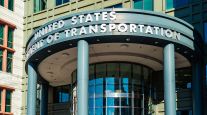ATA Seeks Study on Sleeper Berth HOS Rules
American Trucking Associations and the Minnesota Trucking Association are asking the federal government to do a pilot project to study whether greater flexibility in hours-of service-rules for truck drivers who use sleeper berths would affect highway safety.
A pilot program would help government and industry “translate scientific finding from the laboratory to real-world trucking operations by providing data and information on the relationship between sleeper berth flexibility for off-duty rest and safety outcomes,” ATA and the Minnesota truckers said in a letter released Dec. 16.
The letter sent to Anne Ferro, administrator of the Federal Motor Carrier Safety Administration, said a pilot program could “investigate the role of recent technological advances in monitoring driver alertness and behavior.”
The HOS rule that took effect in July requires drivers to take 10 consecutive hours off after each of their 14-hour on-duty periods during which they can be behind the wheel for 11 hours only.
“The trucking industry wants FMCSA to take its positive, laboratory-based findings on the value of split sleep and try to repeat them in a real-world field study,” ATA President Bill Graves said in a statement. “Doing a pilot test using professional drivers in actual trucking operations could give [FMCSA] even more scientific data on which to base future improvements to the sleeper berth rules.”
MTA President John Hausladen said: “In the case of many truck drivers, particularly those working in teams, allowing them to break up their 10-hour off-duty period into two shorter periods would be beneficial.”
In their letter to Ferro, ATA and MTA said that “a growing body of scientific studies suggests that increasing flexibility in off-duty time . . . may result in improved safety outcomes by improving or sustaining driver alertness.”
ATA and MTA laid out a proposal for a pilot study that they said, to be properly done, would have to see sleeper berth drivers exempted from the HOS rule for two years.




